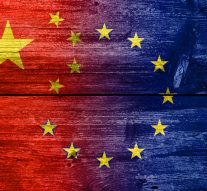
Could G2 become a new potential global economic axis?
Economy 18 September 2017Constant global economic growth is being significantly dependent on wider political cooperation among major political players within the “big chess table”. Political scientists have developed thesis according to which, the XXI century is announced as the “century of China”. Its continuous development of its ways towards the global West lasts for more than a millennium, while its latest “big opening” towards the West has occurred within the first decade of this century. China is especially being active within African and European continents with its economic presence followed by heavy comprehensive investment plans. It seems that China sought its path towards the West through, not only Western Europe, but its Central and Eastern parts also. And while it is ultimately interesting to wider academic community for further investigations and shedding light to this kind of cooperation, several issues are to be dissolved yet among the intercontinental friends.
With the revival of “Silk Road” idea, China has triggered vast number of (sub)regional initiatives and project followed by assertive diplomatic action. But did that importantly changed the current economic status quo alongside Silk Road route? Initiation of “16+1” club (an initiative that brought together Central and Eastern European countries) has drawn almost global attention when China announced it would take over the Port of Piraeus as well as to do investment in developing the high-speed rail between Belgrade and Budapest. Concerns about what the leading EU member states` attitudes towards this kind of farraginous cooperation will be, have fallen apart due to large amount of projects financed by Chinese supportive financial institutions in Eastern EU member states` bloc.
What`s in stake with the G2 axis?
Originally introduced more than a decade ago, this initiative will now be possible to achieve with other two partners – the EU and China. At the first sight, the G2 club should have been filled in with USA and China, but as the global politico-economical occurrences went on, it seems that USA is becoming more distanced from China, and has now been replaced in most of scenarios with the European Union. The idea of forming an informal G2 club has been inspired by the existing G7 (or G8 with Russian Federation) initiative that gathers the group of seven most industrialised countries across the globe (USA, UK, Germany, France, Italy, Canada, Japan).
As published recently by “The Diplomat”, “since the Washington has decided to go its holidays, somebody has to take over its place, and European Union was a great substitute for dealing China issues”. As Italy, France, Germany and the UK could be substituted by the EU, while Japan and Canada have fallen behind the US shadow in this arrangement, this is logical opportunity that stands before China and Europe to take the lead in economic and global financial affairs.
China and G7 club, exportation of goods and services, 1990 – 2016
Beside numerous economic ways of cooperation, those two economic giants cooperate in wide range of political matters. The potential axis would compound of almost two billion inhabitants with impressive 27 trillion USD of nominal GDP in total, maintaining more than 55% of world`s total GDP in 2016. According to what the most notable theories of the international relations claim, if any entity of the international system poses more than 50% of power in world`s total respective area – it can and should be entitled as a superpower. It is clear that both EU and China have problems of quite different nature. While the EU is struggling with its political unity and even further existence, China seems not to be an enough assertive player within the global chess table. On the contrary, its soft component of power, as an arising global player is surely an asset in its way to innocuous modern state.
Existing Chinese exportation parity of goods and services towards the G7 shows that China sums over three out of seven G7 countries in total exportation in 2016. World Bank data further demonstrates the trend of declining the level of exportation among the G7 club, while at the same time, the forecasts for the Asian economic tiger predict the unstoppable growth within the next five to ten years period.
G2 perspectives and opportunities
While many consider the US as an obsolete superpower, it is accepted that both China and EU, economic superpowers will try to pursue their own political strategic interests followed by stable and continuous economic growth. What could potentially distract the G2 axis, is Brexit process and its influence to the EU affairs.
Comparable Chinese, German and French economic ratio, 1990-2016
There is no doubt that mother of all questions that will evolve in near future, is focused on Sino-European economic relations and their ultimate potential to dictate and re-shape the world`s economic outlook in near future. The G2 axis can become desideratum within the international relations, through which further ever-lasting cooperation and stability can be achieved.


